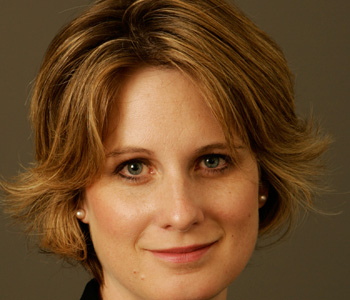Elspeth Probyn
Eating the Ocean
Duke University Press
200 pages, 6 x 9 inches
9780822362135
My book explores how we eat the ocean, in many ways, every day, sometimes without knowing it. Of course we know when we consciously eat fish – battered, breaded, grilled, steamed, or raw - and when we tongue delicious health-sustaining oysters, or partake of steaming bowls of relatively sustainable mussels. What we may not be aware of is that 25% of the global ocean catch disappears into fish oil and fishmeal. In this form fish turn up in supermarket white bread fortified with omega 3, cosmetic products, pet food, and become food for farmed fish.
Humans have eaten the ocean for as long as we’ve been around. But we didn’t have the technology that now allows fishing boats to go further out, and to fish ever deeper down. Until relatively recently we thought that we could eat the ocean with impunity. Now we are at risk of eating it up, devouring it until there’s nothing left except the not-so-apocryphal jellyfish n’ chips.
While concern about the terrestrial production of protein has burgeoned over the last decades, it seems harder to get people to care about where their fish comes from. Perhaps it is because it is difficult to cuddle a cod. Though as readers will discover, there is a wacky FishLove conservationist site, which includes photographs of a naked Lizzy Jagger riding bareback on a yellowfin tuna. WWF’s campaigns resort to photoshopped images of bluefin tuna with panda or white rhino masks to trick us into caring. Fish just don’t have the anthropomorphic associations that seemingly make us care about whether our chickens are happy free-rangers or not. I think that it is also because fish inhabit a milieu that most humans find cold and wet and bewildering. What are these cold-blooded creatures for if not for human eating?
Across the book I try to engage readers in ways that will make them interested in the wondrous complexities of marine life, of the sea and her inhabitants. In my ethnographic travels to the north of Scotland, to the far south of Australia, and to points in between, I gather material about how people relate to fish, and how they tell their stories – and often deep care and love – for them. Fishers, marine scientists, fisheries managers, and people who live by and on the sea have related their concerns, which I then relate to some wider questions: how can we help fishing communities, fish, and the oceans be more sustainable? What are the gender relations in the fishing field? What are queer fish? I am deeply invested in teasing out the very different sorts of knowledge that construct what eating the ocean means. Who tells the stories, how, to whom and why is a theme that reverberates through my book.
This book is a passionate, sometimes critical and frustrated intervention into the current dominant politics of food. Public campaigns, and journalistic writing often dumb down complex questions into banal slogans: eat local, eat seasonally, etc. In terms of the global-local configurations of fishing, it is hard to “eat local” fish. If you want a slogan for fish it would have to be eat small.
Within marine the “simplification of the sea” refers fishing down the web – how we are eliminating the top predators, and then ever downwards. This allows for exploding populations of crustaceans and other invertebrates, which is good for lobstermen. But in the (not so) long run, this destroys ecosystems and threatens trophic collapse whereby we are back to the jellyfish scenario with seas filled with medusoza, and gelatinous zooplankton that nothing wants to eat. I hijack this scientific term and use it to talk about how in public debate the sea is being simplified. Numerous well-meaning NGO campaigns resort to simplistic devices such as the traffic light system, whereby red is bad. Even these have been further dumbed down now to only “green” ticks.
As a longtime feminist, and writer, my turn to fish has disconcerted many. It does, however, follow from my many studies of various aspects of eating. I also challenge how in current discussions about the Anthropocene, “age of the human,” gender seems to be passé. From a discussion of mermaids through to the lives of fisherwomen, I seek to elevate gendered and queer matters of human-fish entanglement. At a conceptual level I grapple with how gender and sexuality, as well as ethnicity and class, have been squeezed out of academic discussions about the Anthropocene, climate change and the more-than-human. I seek to recover the lost stories of the women who have followed fish, and to hear what happens to human-fish settlements when the fish disappear.
Two instances of this ground the chapter in history – the rise and fall of the herring industry in Scotland that lasted from the nineteenth century until post WW II, and the collapse of the cod fisheries of the Great Banks off Newfoundland and Labrador in Canada. The women who form the overwhelming workforce in fish processing, as well as the fishwives who kept the books of family fish businesses could see that a crisis was looming. In the male-dominated world of scientists and fisheries managers, their voices weren’t counted; they didn’t matter.
I would hope readers open the book at the introduction where I describe the following:
Imagine a sparkling day on Sydney’s Harbour... eating creamy Sydney rock oysters and drinking a glass of fine Australian white wine with a light warm salty breeze on your face. Look - there’s the Opera House with her shells, to your left is the Sydney Harbour Bridge (the “Coathanger”) that each New Year’s Eve features actual over-the-top fireworks touted as the first to be seen globally on the first day of a new year. On the water there’s the crazy skittering of the ferries, sailboats and kayaks criss-crossing east and west, north and south. Around Circular Quay the usual huddles of tourists handle the faux Ugg boots and the didgeridoos made in China. Next to the berth for the ferry to Manly, Aboriginal musicians play proper didge. Over by the old shipping wharves – now eye wateringly expensive real estate – some young boys but mainly old women and men fish. Many came from Vietnam on boats and fresh fish will feed the family. Day-in day-out, they sit on milk crates fishing under the bridge. Holding all these stories together is the water of Sydney Harbour – it is normally a color called ‘harbor green’ but sometimes it burnishes to a shimmering near-turquoise. There’s something like 500 gigalitres of water in the Harbour, an amount that is called one Sydharb. Below the surface swim some 586 different species of fish. In amongst the local fish there are now tropical fish who, like the clownfish in Finding Nemo, ride the East Australia Current over a thousand miles down the from Great Barrier Reef in the north.
It sounds rather magic, and it often is; at least on a surface level. The reason why you can now go snorkeling in the Harbour and encounter tropical fish is that this part of the Pacific Ocean is warming faster than anywhere else in the world. And unbeknownst to many the water in the Harbour leads the world in the amount of heavy metals it contains. Untreated storm water flows into the Harbour carrying pesticides and nitrogen. Fish get used to the manmade modification of their world and take advantage of the increased nutrients. They seemingly thrive, and yet they are poisonous for their human and nonhuman predators.
Again and again through this book I wonder how we can care a bit more, or a bit better, for the entire entangled marine elements that we devour when we eat the ocean. I also ask – as in the title of the last chapter – can we eat with the ocean? I hope different people will read this book, in different ways. I also wrote this book in the hopes of broadening my fields of studies – gender, queer, cultural studies. I want to encourage academic writers and researchers to use our conceptual and methodological tools to discover wildly different, deeply and materially important subjects.




We don't put paywalls. We don't distract you with ads. We don't sell your data.
Please help to keep this running!